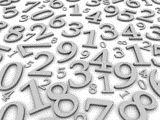Statistics, Department of

Department of Statistics: Faculty Publications
Document Type
Article
Date of this Version
2009
Citation
Orthopedic Reviews 2009; volume 1:e29
Abstract
The likelihood of development of degenerative joint disease (DJD) of the temporomandibular joint (TMJ) is related to the integrity of the TMJ disc. Predilection for mechanical failure of the TMJ disc may reflect inter-individual differences in TMJ loads. Nine females and eight males in each of normal TMJ disc position and bilateral disc displacement diagnostic groups consented to participate in our study. Disc position was determined by bilateral magnetic resonance images of the joints. Three-dimensional (3D) anatomical geometry of each subject was used in a validated computer-assisted numerical model to calculate ipsilateral and contralateral TMJ loads for a range of biting positions (incisor, canine, molar) and angles (1-13). Each TMJ load was a resultant vector at the anterosuperior- most mediolateral midpoint on the condyle and characterized in terms of magnitude and 3D orientation. Analysis of variance (ANOVA) was used to test for effects of biting position and angle on TMJ loads. Mean TMJ loads in subjects with disc displacement were 9.5-69% higher than in subjects with normal disc position. During canine biting, TMJ loads in subjects with disc displacement were 43% (ipsilateral condyle, p=0.029) and 49% (contralateral condyle, p=0.015) higher on average than in subjects with normal disc position. Biting angle effects showed that laterally directed forces on the dentition produced ipsilateral joint loads, which on average were 69% higher (p=0.002) compared to individuals with normal TMJ disc position. The data reported here describe large differences in TMJ loads between individuals with disc displacement and normal disc position. The results support future investigations of interindividual differences in joint mechanics as a variable in the development of DJD of the TMJ.


Comments
©Copyright L.R. Iwasaki et al., 2009
Open access
doi:10.4081/or.2009.e29